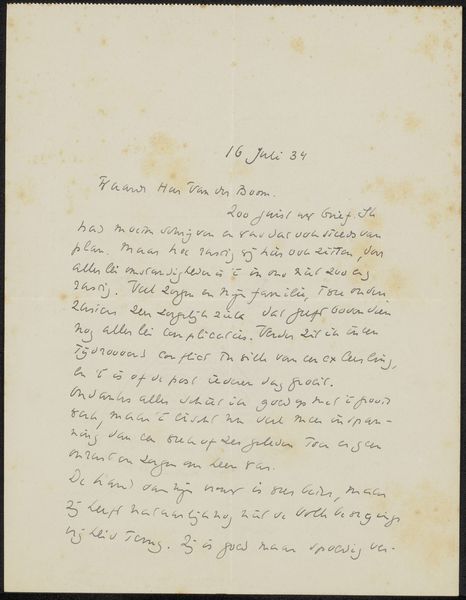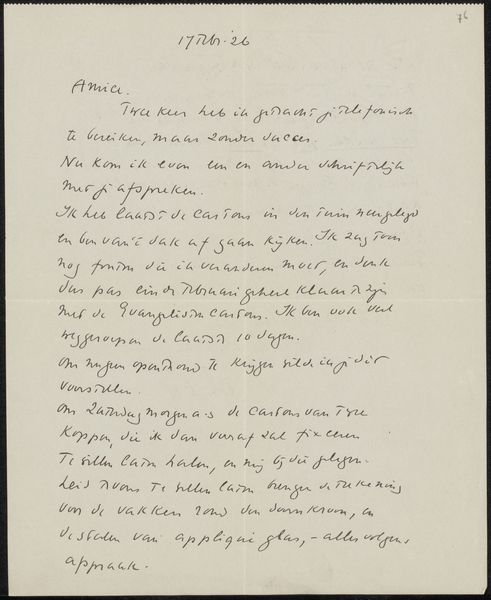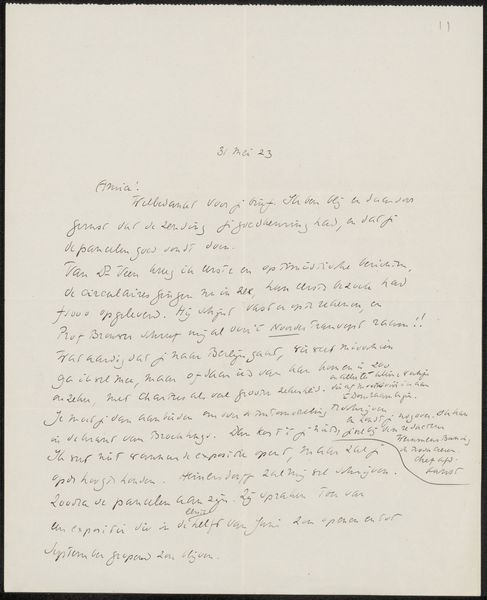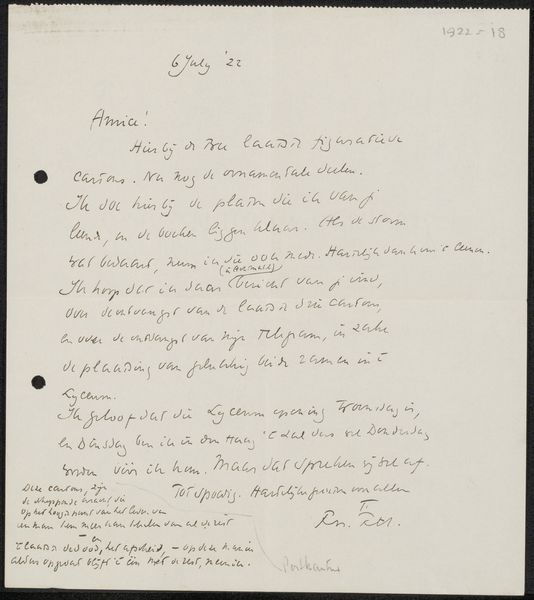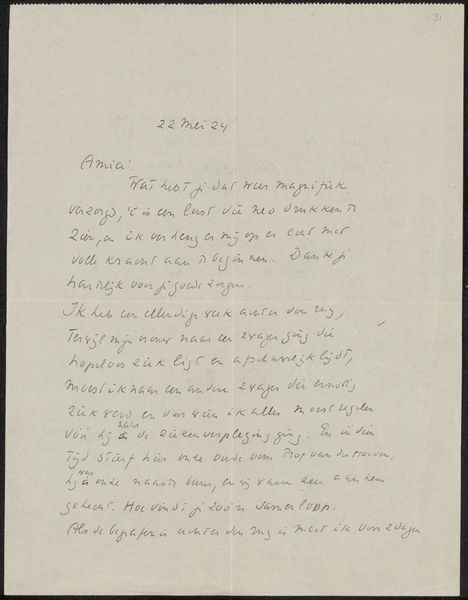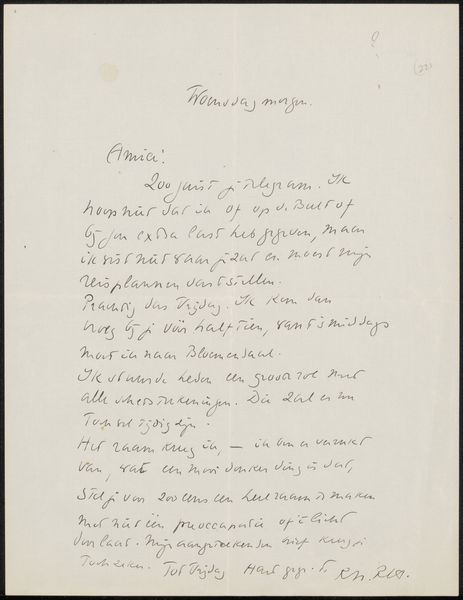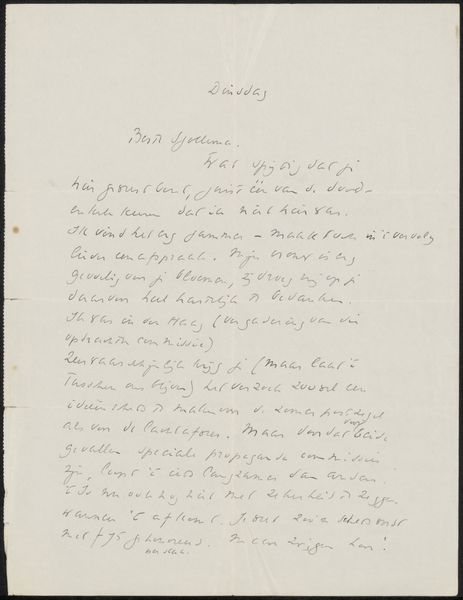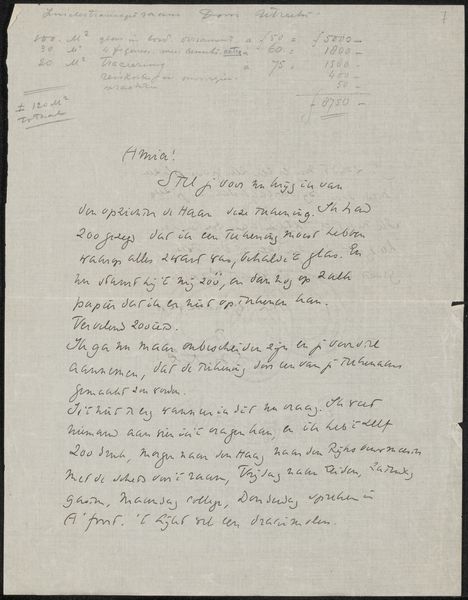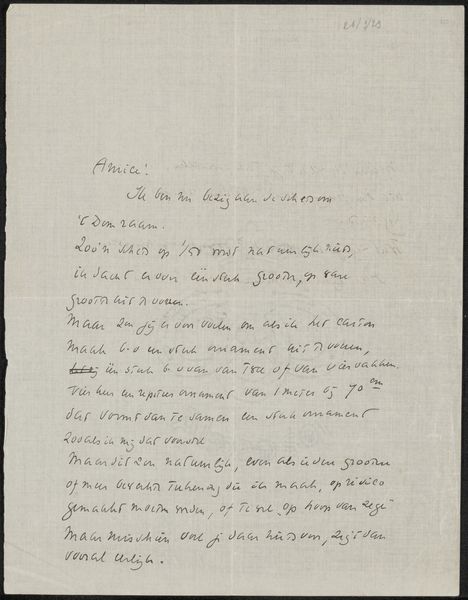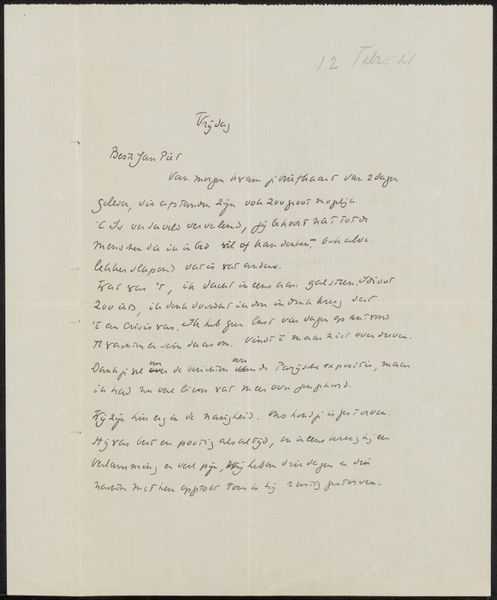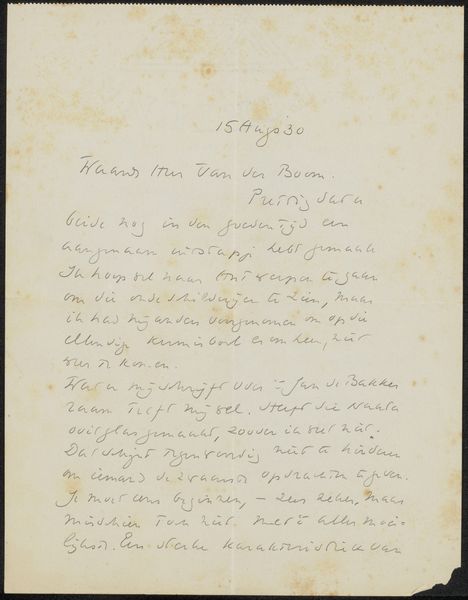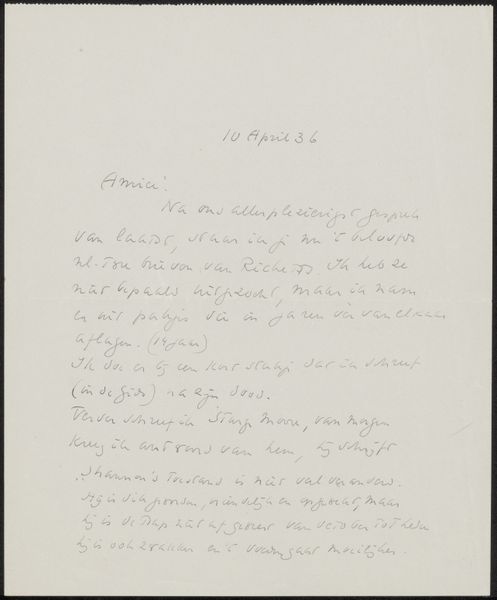
Copyright: Rijks Museum: Open Domain
Curator: Before us is a drawing entitled "Brief aan A. van der Boom" by Richard Nicolaüs Roland Holst, likely created between 1934 and 1939. It resides here at the Rijksmuseum. Editor: It looks so fragile. The aged paper and delicate handwriting give it a very personal, intimate feeling. You almost feel as though you’re intruding on something private. Curator: Absolutely. As a material object, it's fascinating. Notice the ink; the texture on the paper's surface created subtle variations in line weight, which imbues it with a certain expressiveness despite its apparent simplicity. And paper was not only a surface here; its qualities of being able to easily transmit these intimate communications played a significant part. Editor: This also makes me consider who A. van der Boom was, and what role they occupied in Holst's life that he chose this method of communication. I’m wondering about their relationship. Was this a simple note, or part of a deeper exchange occurring during turbulent times? We have the date and should research it; what's revealed can further reveal societal relationships during that period. Curator: Perhaps. Looking at the handwritten text itself, we are looking at an archive in its most raw state, bearing an immediate link between production of mind and production of labor. The letter isn't printed; we are looking directly into a system of creating messages through bodily actions. And the materials of its making would have been common, available… utilitarian. Editor: But I see that “utilitarian” is layered with other meaning as the context deepens; I agree! This is especially resonant in the shadow of impending war. Personal communication became critical for solidarity, to organize and encourage continued cultural growth among like minds. It makes you think about the act of writing as an assertion of agency under social tension. Curator: Precisely! In analyzing Roland Holst's work here, we gain not only insights into artistic process or intentions, but also into production systems inherent to creative production within society itself. Editor: For me, it emphasizes art's power not as a detached aesthetic experience, but as embedded, lived realities shaping individual and collective fates. Curator: Indeed. A simple note, yet such rich and overlapping materials. Editor: Exactly—layers waiting for audiences to read between these historic lines.
Comments
No comments
Be the first to comment and join the conversation on the ultimate creative platform.

